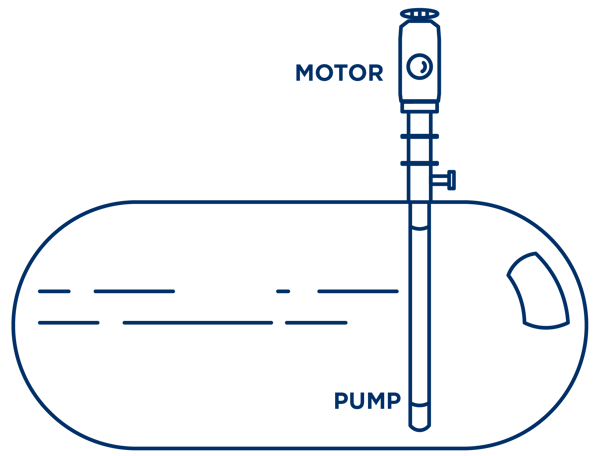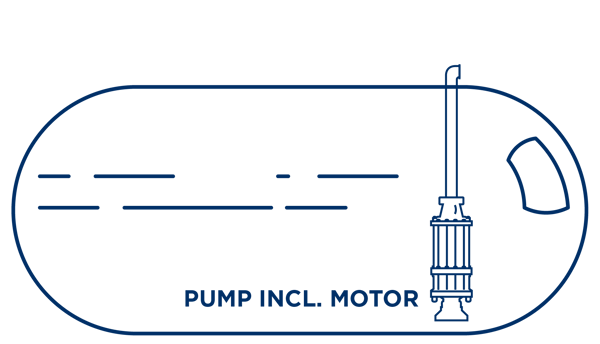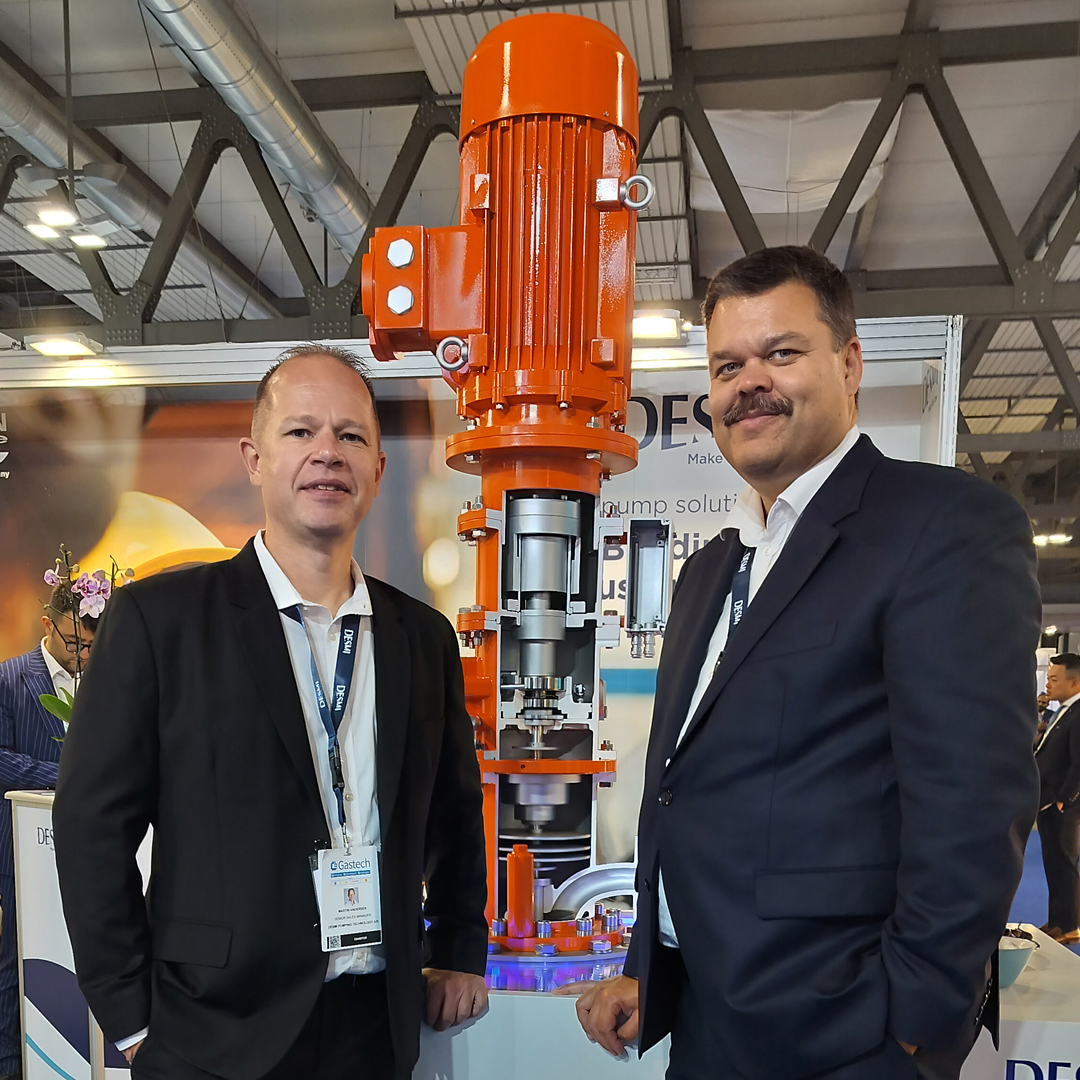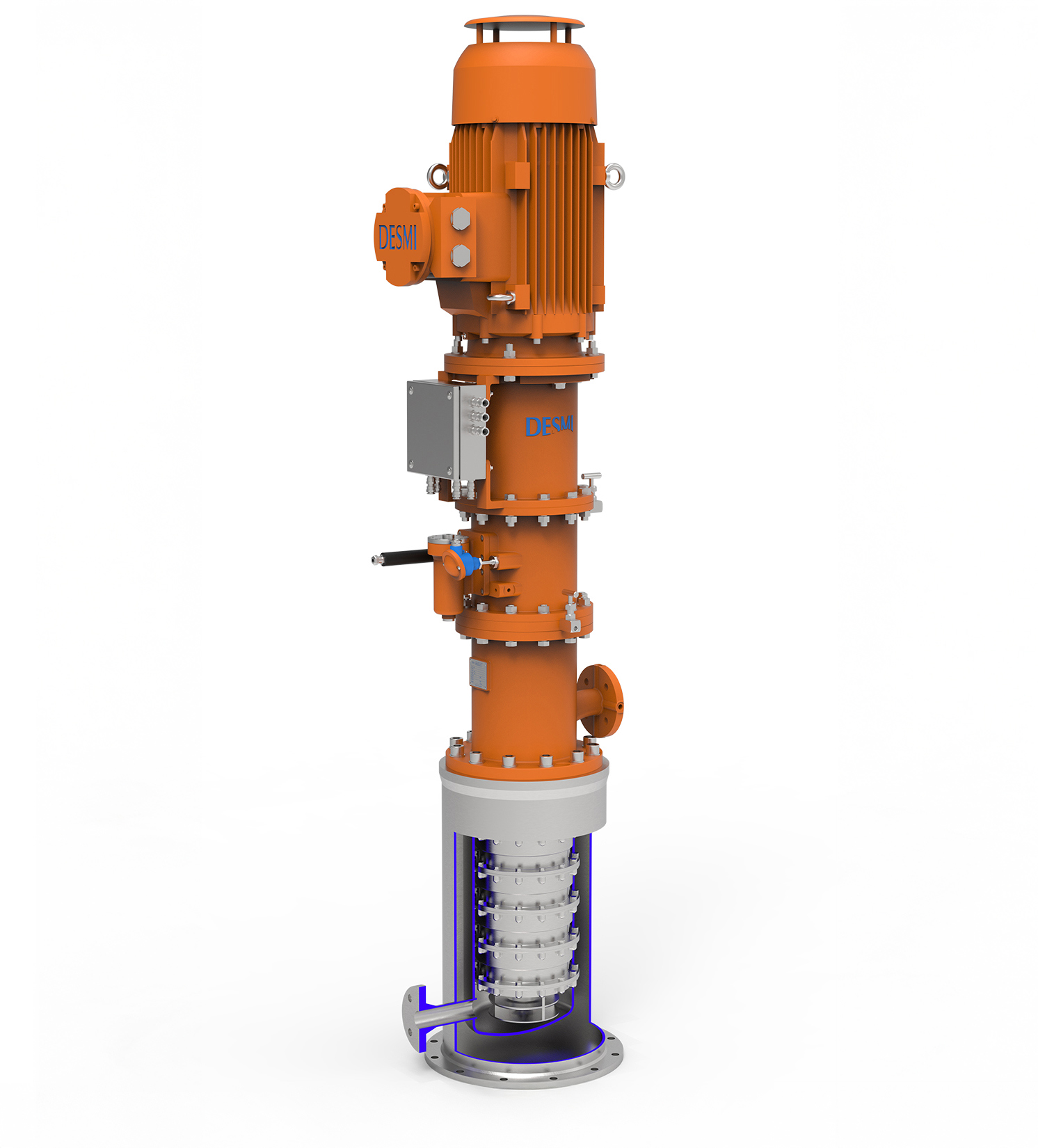
Which fuel pump is best for LNG? We compare deepwell and cryogenic submerged pump designs
September 2025
What are the advantages and drawbacks of deepwell fuel pumps and cryogenic submerged pumps for LNG fuel systems?
Discover the most important answers in this article and decide which design is right for you.
According to Lloyds Register, LNG offers several benefits as a marine fuel, including reduced emissions compared to heavy fuel oil, high energy content per unit volume, and an expanding LNG bunkering infrastructure which makes it easier to refuel at major ports worldwide. But what is the best fuel pump solution for handling LNG on board?
In the following, we shall compare two pump design approaches that have been proven to handle LNG well: deepwell fuel pumps and cryogenic submerged pumps. Based on this comparison, you will hopefully be in a better position to make an informed decision regarding the choice of fuel pump system on your vessel.
General technical comparison
The fundamental difference between deepwell pumps and cryogenic submerged pumps is how much of the pump is located inside the fuel tank itself. Which benefits and drawbacks do these two fundamental approaches provide? Let’s take a look.

A deepwell LNG pump like the DesFuel Deepwell Pump (RSL) from DESMI has the motor mounted outside the fuel tank with a vertical shaft connecting the motor with the impeller, which is located at the bottom of the tank, submerged in LNG. The pump is shaft-driven, supported by multiple guide bearings inside an intermediate pipe. The pumped LNG lubricates the drive shaft while the motor is air-cooled and the main bearing is oil-lubricated. The deepwell pump can be installed in a pump well (cryosump) next to the tank. |
 A cryogenic submerged LNG pump is installed on the bottom of the LNG tank, with all pump components fully submerged in the liquid. The LNG cryogenically cools the motor, and the pump is a direct-drive unit with the motor mounted in line with the pump shaft or integrated with it. The pump is sometimes installed in a pump well but is always located in the tank. Also, the cryogenic submerged pump can be installed in a pump well (cryosump) next to tank, but in that case the whole pump is submerged to LNG. |
Ease of maintenance
|
The motor, pump base, magnetic coupling, etc. of a deepwell pump are easily accessible, making it easy to monitor pump condition. It also makes service and maintenance easier and more cost-effective: The DesFuel – Deepwell (RSL) Pump, for example, has standard bearings that can easily be maintained by the crew without specialist help.
The ability to seal off the caisson pipe means that a deepwell pump base can be removed, and that the entire pump including the cylinder can be retrieved without emptying the LNG tank. Even though the pump base is outside the LNG tank, the DesFuel Deepwell (RSL) pump therefore makes up a completely sealed fuel pump system.
|
|
| This contrasts with cryogenic submerged pumps where all pump components are submerged and can only be accessed if the tank is empty which require costly and time-consuming gas freeing. |
Installation footprint
Pump footprint may be an important consideration if space on deck or inside a tank connection space is limited.
|
With a DesFuel Deepwell (RSL) pump, the pump base is located outside the tank and therefore takes up more space than a cryogenic submerged pump that is completely submerged in the LNG tank, although DesFuel Deepwell pumps are also available with belt drives that significantly reduce the necessary height above the tank.
|
|
| The only elements of a cryogenic submerged pump that emerge from the tank are the fuel pipe and power cable. |
Designing for redundancy
|
Deepwell pumps can be serviced and repaired as needed, even at sea, reducing the need for redundant units, and they often have long service intervals: With 25,000h MTBR, for example, two deepwell pumps could provide a 5-year docking interval. On a ship with two LNG tanks, one deepwell pump per tank would be sufficient in most applications.
|
|
| To ensure uninterrupted cryogenic submerged pump operation, it is advisable to install redundant pumps as the pumps are not easily accessible; if a pump breaks down, another must be available to take over. On a ship with two LNG tanks, you would typically install four submerged pumps (two per tank). Submerged pumps will typically have shorter service intervals than deepwell pumps, so more pumps could be needed to have the required redundancy and operating hours available. |
Starting, operation, and dry-running
|
A deepwell fuel pump typically has lower NPSHr values than a cryogenic submerged pump and is therefore able to start and keep running at lower fuel levels. A deepwell pump is less sensitive to dry running and can be used as stripping pump; it also offers fast starting with no need to wait after stopping before starting up the pump again.
|
|
| A cryogenic submerged pump needs to be fully submerged in LNG when starting. It typically requires higher NPSHa than a deepwell pump and therefore cannot run as low as a deepwell pump. |
Handling of impurities
|
A deepwell pump does not use LNG for cooling or lubricating the motor and bearings and therefore tolerates fuel impurities. A fuel filter will usually need to be installed downstream of the pump, but as this filter (and the lubrication oil filter) is easily accessible outside the fuel tank, it can quickly be cleaned when needed so operation is never interrupted because of clogging filters. Also, magnetic impurities cannot reach the motor windings on a deepwell pump and cause damage. The DesFuel – Deepwell Pump (RSL) has a suction strainer on the fuel inlet to prevent larger impurities like pieces of plastic, welding rods etc. from entering the pump.
|
|
| A cryogenic submerged pump has a built-in filter that removes impurities from the LNG (for example from shale gas). Some pump brands filter the entire LNG flow; some only filter the flow for cooling and lubricating the bearings and windings. If the filter clogs up, the pump is not available until the filter has been cleaned. If the filter is self-cleaning, this can be achieved without emptying the tank first, but if the self-cleaning mechanism is unreliable or breaks down, the only solution is to empty the tank followed by manual cleaning. |
Fuel flexibility
|
|
A deepwell pump can be used with a variety of fuels, providing a future-proof fuel supply solution that will also handle LPG, NH3, MeOH, and other alternative fuels. |
|
|
A cryogenic submerged pump, however, is designed specifically for LNG fuel applications and for using this liquid as lubricant and coolant
|
Boil-off gas
|
When heat enters an LNG fuel system, the liquefied natural gas starts to evaporate, producing boil-off gas that needs to be handled. Deepwell pumps minimise this phenomenon; because the electric motor, coupling, and bearings are outside the tank, less heat is transferred to the LNG.
|
|
| By contrast, all components of a cryogenic submerged pump are installed inside the LNG tank where they generate heat that will contribute to LNG evaporation. |
Purchase price
|
With deepwell pumps, often, lower number of pumps cna be selected to fulfill redundancy and service period expectations. Also no need for cryogenic cables, gas tight cable penetrations, or separate discharge flange.
|
|
|
Cryogenic submerged pumps tend to cost less per unit than deepwell pumps and can be considered a low-cost alternative. However, to ensure redundancy, several pump units are often required, increasing the total purchase price and maintenance cost for a reliable solution. Additionally, installing a cryogenic submerged pump requires cryogenic cables, and all cable penetrations, intermediate pipes, and discharge flanges need to be gas-tight and require expensive class certificates. |
Key Takeaways
To sum up, deepwell fuel pumps offer a number of benefits over cryogenic submerged pumps. They are easier to maintain, reducing the need for additional units to ensure redundancy. They will work with lower tank levels than cryogenic submerged pumps, and they produce less boil-off gas. In addition, they can be used with other alternative fuels than LNG.
Cryogenic submerged pumps take up less space outside the tank and cost less per unit than deepwell pumps (although more components are required for installation, and achieving redundancy requires more units). Their built-in filters protect the pump bearings and windings but are risk of clogging.
We hope that this quick overview has given you answers you can use when sourcing LNG fuel pumps for ships.
If you have any questions or comments, or if you would like to discuss your options when it comes to alternative fuels, contact us.


